Reading Time: 8 minutesMany factors contribute to your success at reeling in some cool creatures in the saltwater fishing world. Amongst the most important, your choice of lure stands out as a crucial component. Whether you’re targeting game fish on a Florida Keys flat or hunting big Snook in the backwaters, knowing the different types of lures and what makes them special for each species is key.
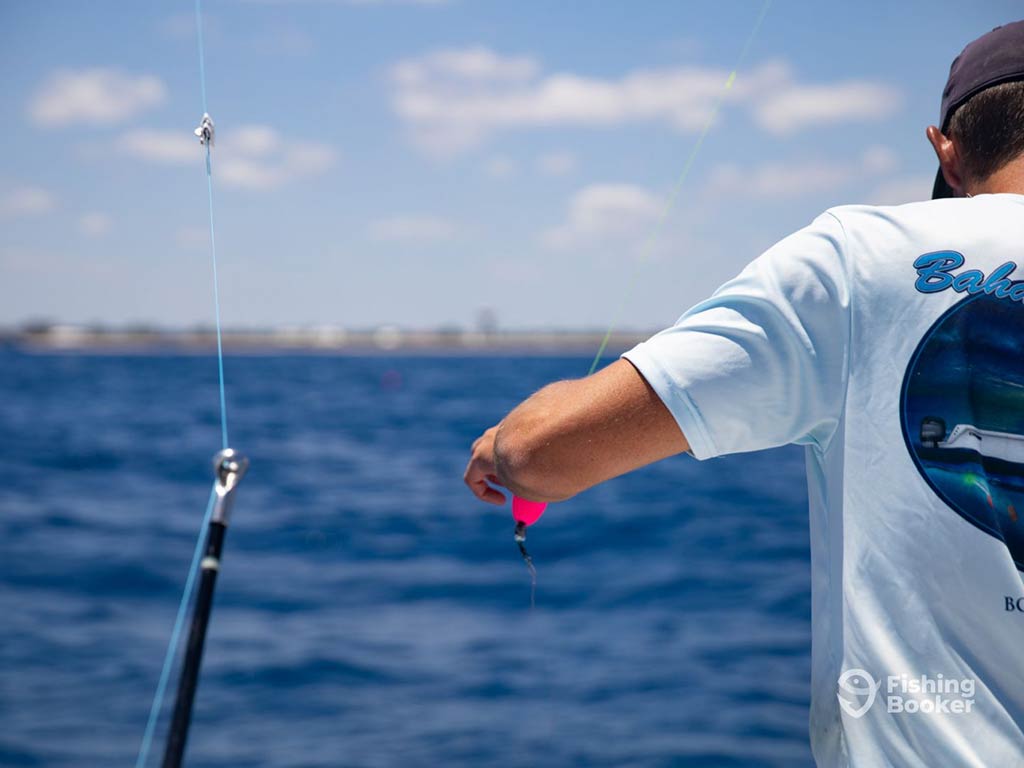
As we dive into the captivating realm of saltwater fishing lures, we’ll explore all the different options, the species they attract, and how, when, and where to use them. By the time you’re done reading, you’ll be ready to get out there and catch some fish. Let’s get started!
Saltwater Lures Basics
The Benefits
If you haven’t yet stepped into the world of artificial lures, now’s the time to learn more and prepare for your first experience. Using saltwater lures offers several benefits that can up your fishing game. The most influential advantage is their versatility. Saltwater lures come in all kinds of designs, colors, and sizes - made for imitating an array of prey.
Saltwater lures also provide the advantage of casting far and more accurately. The weight of the lures make casting into tight areas a breeze, allowing them to work their magic and entice hungry fish to strike.
What to Look for
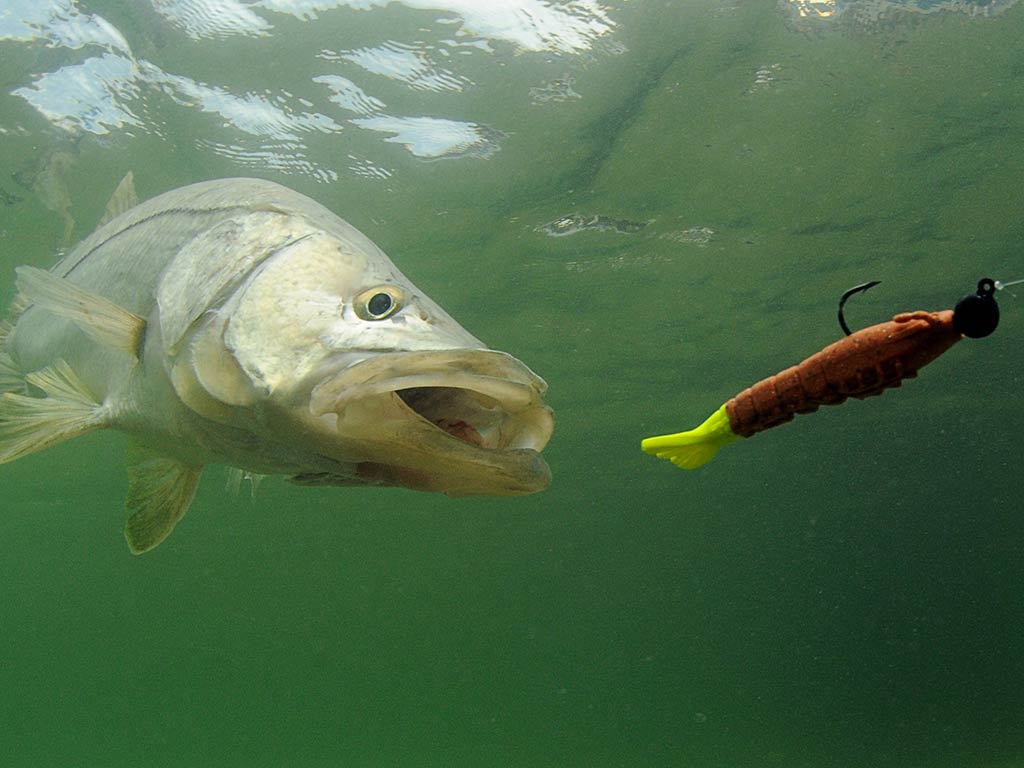
When selecting a lure, it’s important to consider a few factors to maximize your success. Firstly, matching your lure to the environment and targeted species is key. The color, size, and action of the lure should imitate the local bait fish in that area.
Secondly, you want to ensure the lure you select is durable enough to withstand the corrosion effects of saltwater. Another thing to keep in mind is to opt for a lure with realistic movement, flashiness, and noise. The more action and attraction the lure can bring, the better chance you have of getting a fish to bite. Ultimately, if you can find a lure that fits all the boxes above, you have a great tool in your hand to give you some excellent saltwater fishing!
Types of Saltwater Lures
Soft Plastics
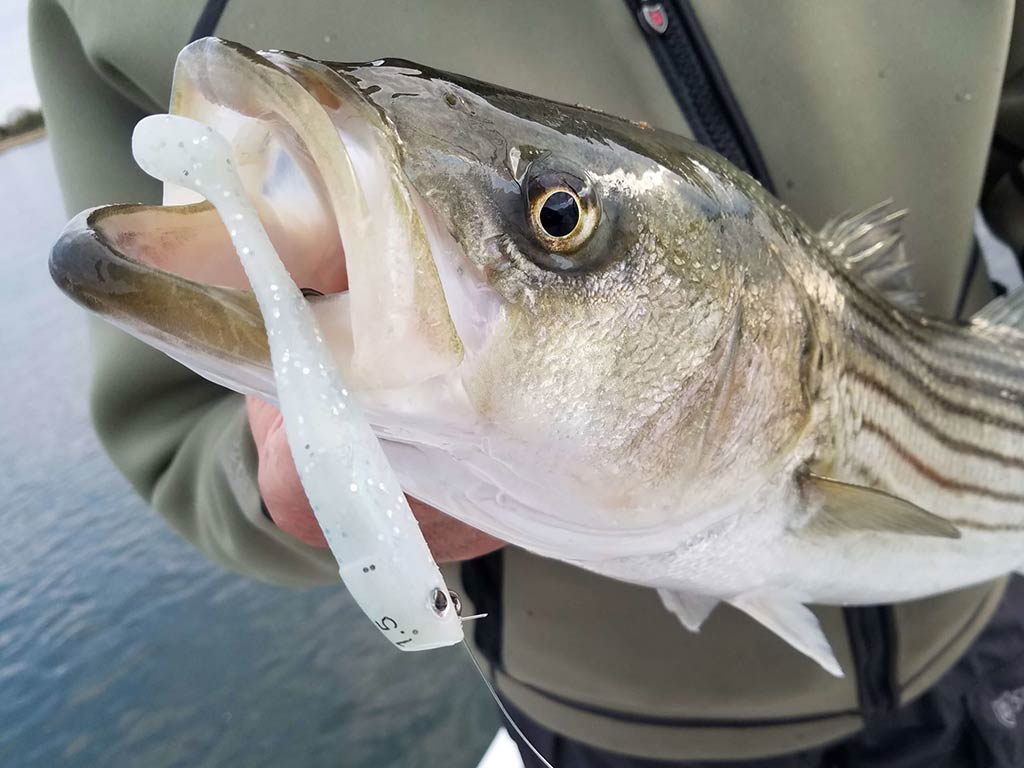
Soft plastics and jig heads are among the most popular saltwater lures out there. They’re easy to use and give off a lively mimic of common prey. There are endless choices out there that you can bounce along the bottom or quickly retrieve in the open. Berkeley, D.O.A, and Gulp! are some of the best manufacturers, widely acclaimed by anglers - and fish!
Soft plastics are gobbled down by tons of saltwater species, but each species may exhibit its own preferences for specific styles and sizes. You can also use them in just about any saltwater environment. Whether fishing the shallows or deep, these versatile lures have you covered.
You may have a hard time choosing between lures. My recommendation is any saltwater paddle tail swimbait with a jig head to match it.
Topwaters
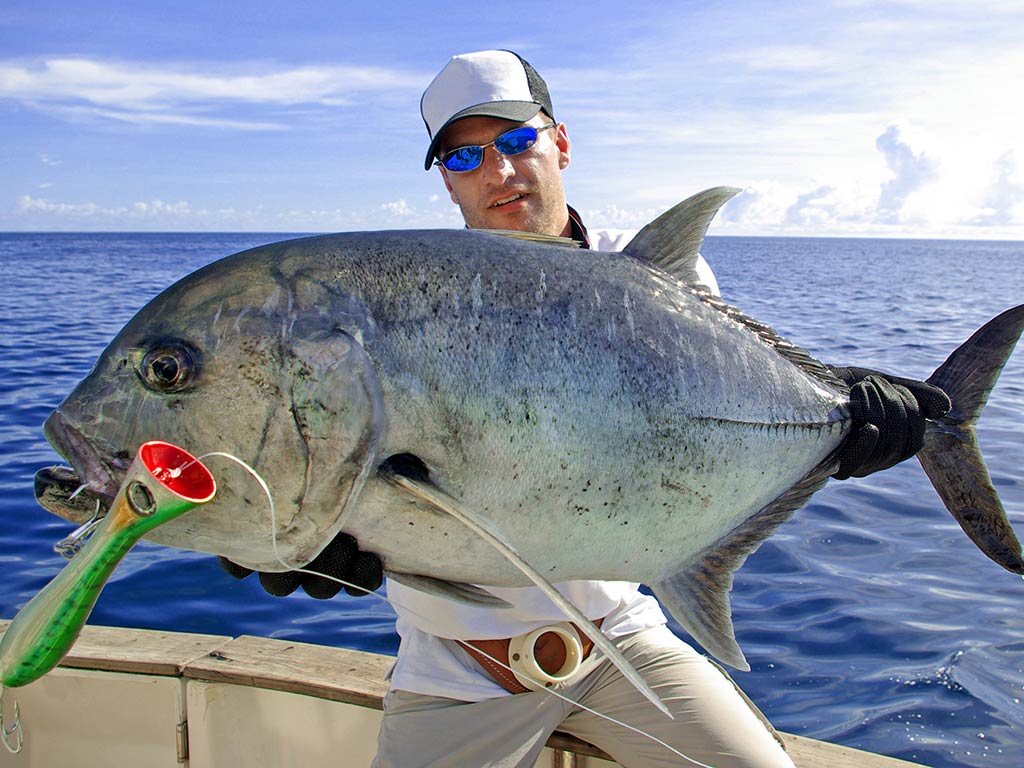
Seeking an adrenaline-pumping blow-up that will add to your fishing passion? Look no further than topwater lures. As you jerk your bait along the surface, the wake that soon follows - accompanied by that massive splash - is what makes this lure an angler favorite. The MirrOlure top dog is a perfect example of an excellent saltwater topwater lure, while popper lures are particularly popular for inshore fishing.
Numerous saltwater species share an interest in hitting topwater lures, with angler-favored catches including Redfish, Striped Bass, Tarpon, and more exotic fish, such as the Trevally pictured above. To optimize your chances, explore inshore habitats such as flats, islands, and mangroves, where these lures continuously entice large fish.
Spoons
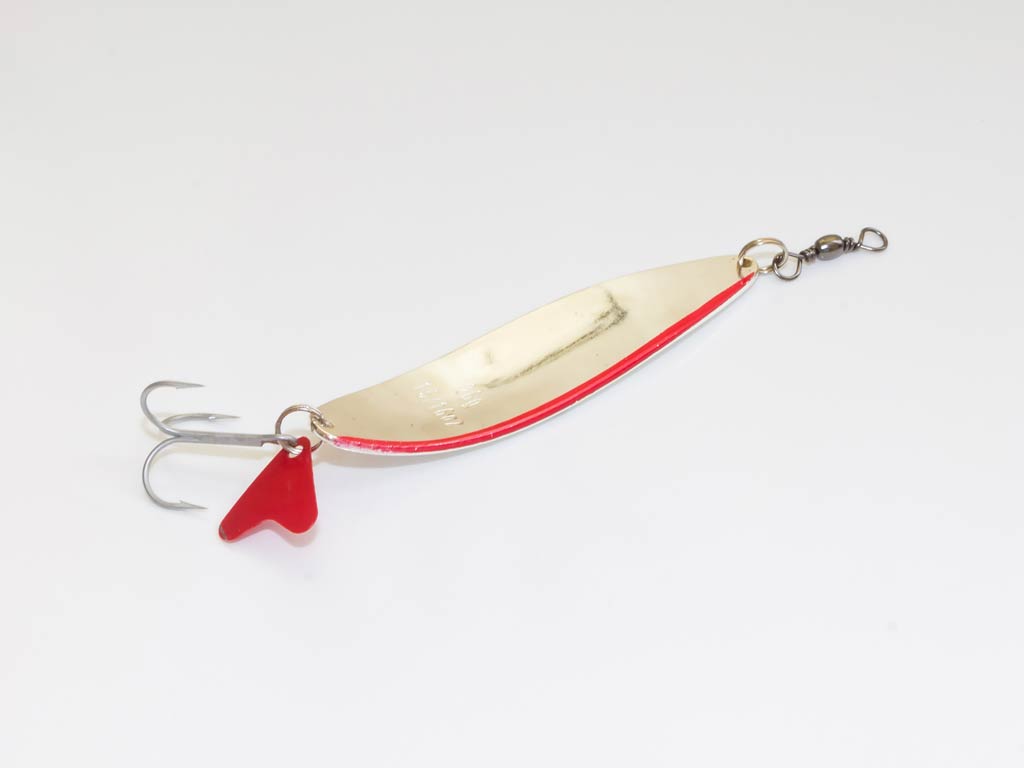
If you’re new to the sport, you may be thinking what has cutlery got to do with fishing?! Well, spoons are similar to those you’re used to eating with. However, they have a unique look to them with a flat piece of shiny metal followed by a treble hook. The shiny appearance captures the attention of nearby predators and entices them to bite. Some spoons have colorful paint on them or even details to resemble a bait fish. Check out the Sea Striker casting spoon or the Rapala rattlin’ minnow for some effective saltwater spoons.
Knowing where and how to use a spoon will up your chances of success when saltwater fishing. You can use spoons in various areas, but popular locations include the beach, jetties, inlets, flats, backwaters, and even offshore points. Popular saltwater species like Snook, Bluefish, Striped Bass, and Tuna are among the fish that could strike a spoon.
Bucktail Jigs
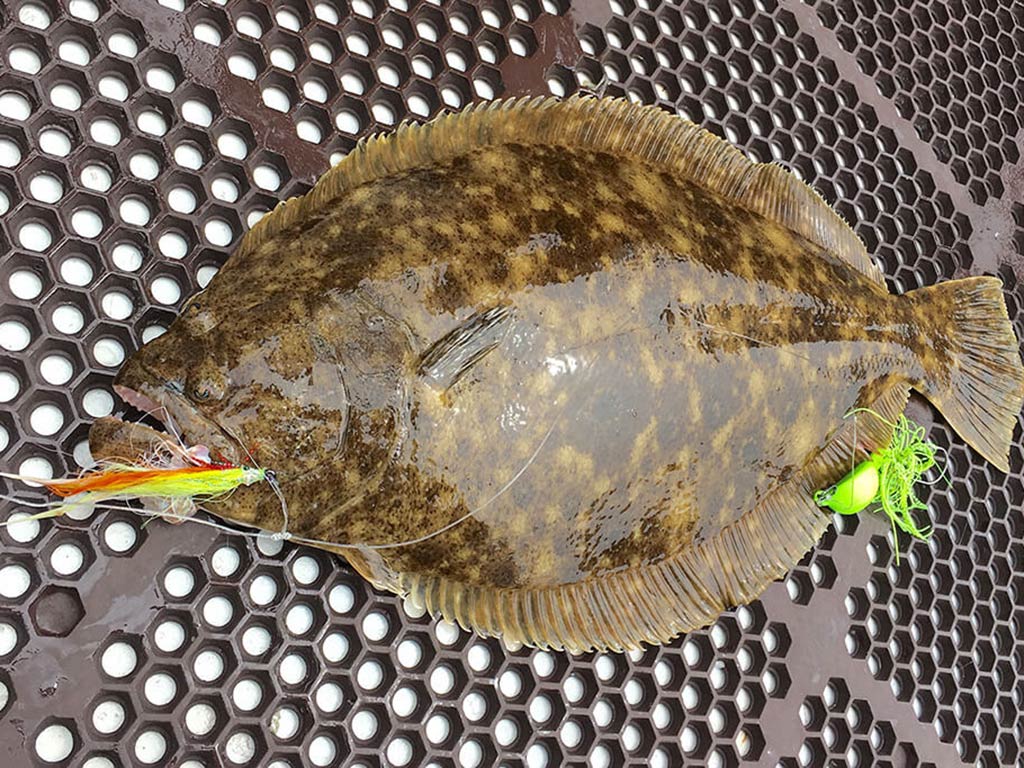
A staple in saltwater fishing, bucktail jigs are known for their effectiveness and cool appearance. They mimic minnow-like species with a jig resembling a fish head followed by a fur tail. The soft material flows in the water, creating a natural look. Wapsi and Berkeley are leaders in bucktail manufacturing, especially the former’s “fusion 19.”
Bucktail jigs attract quite a few saltwater species, such as Flounder, Snook, Tarpon, Stripers, and others. The most common technique for these jigs is to let them bounce along the bottom. Their movement and enticing flash attract nearby predators eager for a bite. You can use these guys in deeper waters near reefs or shallower areas like flats.
Twitch Baits
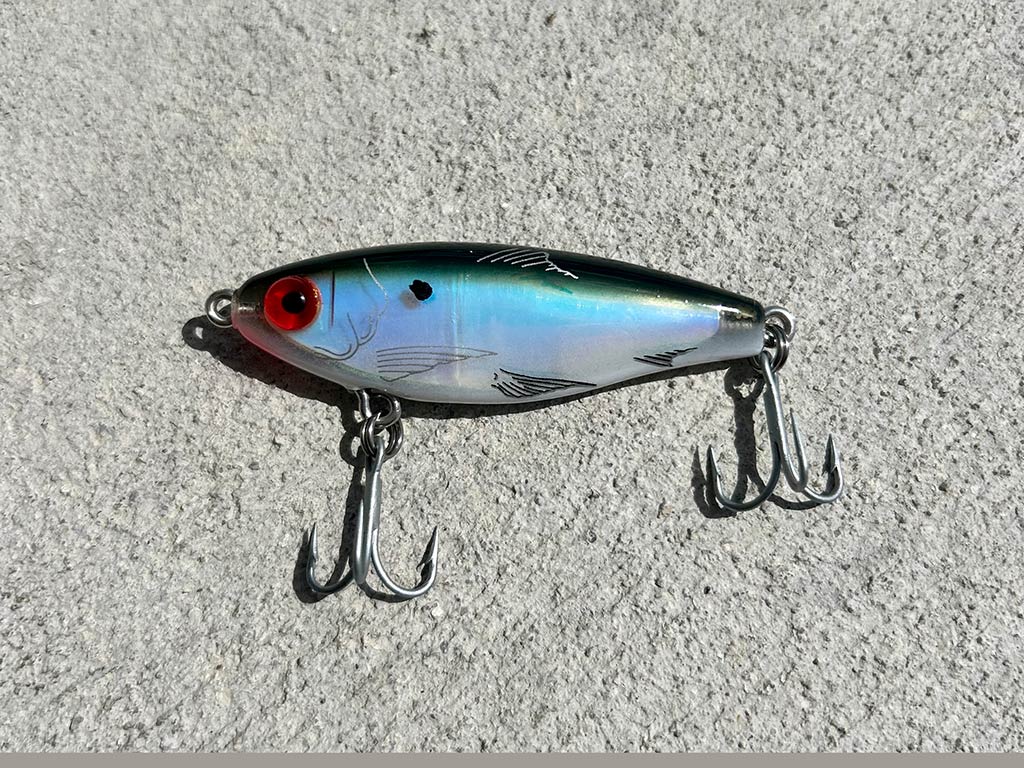
Photo courtesy of Caitlyn GatrellNext up on our list of saltwater lures are twitch baits. MirrOlure is a leading brand for twitch baits, with their MirrOdine lure as one of the best ones out there. I find that using these lures in 1-4 feet of water provides the best results. Therefore, the flats are some of the best areas to bust out your twitch bait.
Most inshore species have a predisposition towards twitch baits, so you won’t have much trouble getting the fish to bite. Twitch baits resemble wounded fish, providing an easy target for hungry predators. Just lightly twitch it, let it sit, and repeat.
Jerkbaits
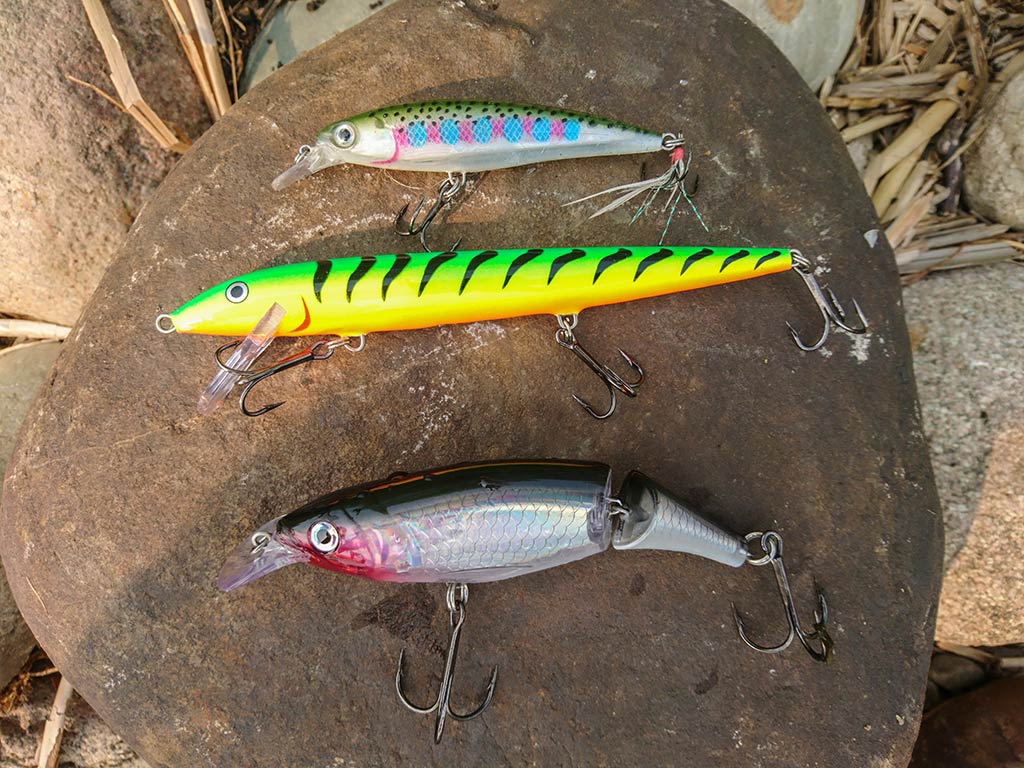
Jerkbaits are another prominent player in the saltwater lure scene, known for their noise and movement. They’re quite similar to twitch baits but a couple of things set them apart. First of all, jerkbaits suspend on the surface while some twitch baits may sink. In addition, twitch baits require more of a light twitch, while you need to pull harder with jerkbaits. If you need an example of a great jerkbait, Rapala’s “x-rap” is one of the best options there is.
Hungry fish can’t resist jerkbaits, especially those hanging around inshore habitats like flats or areas with flowing water. Species like Snook and Seatrout frequently bite jerk baits. You can find some luck using jerkbaits in deeper water too, but keep in mind the bait will float on the water’s surface.
Flukes
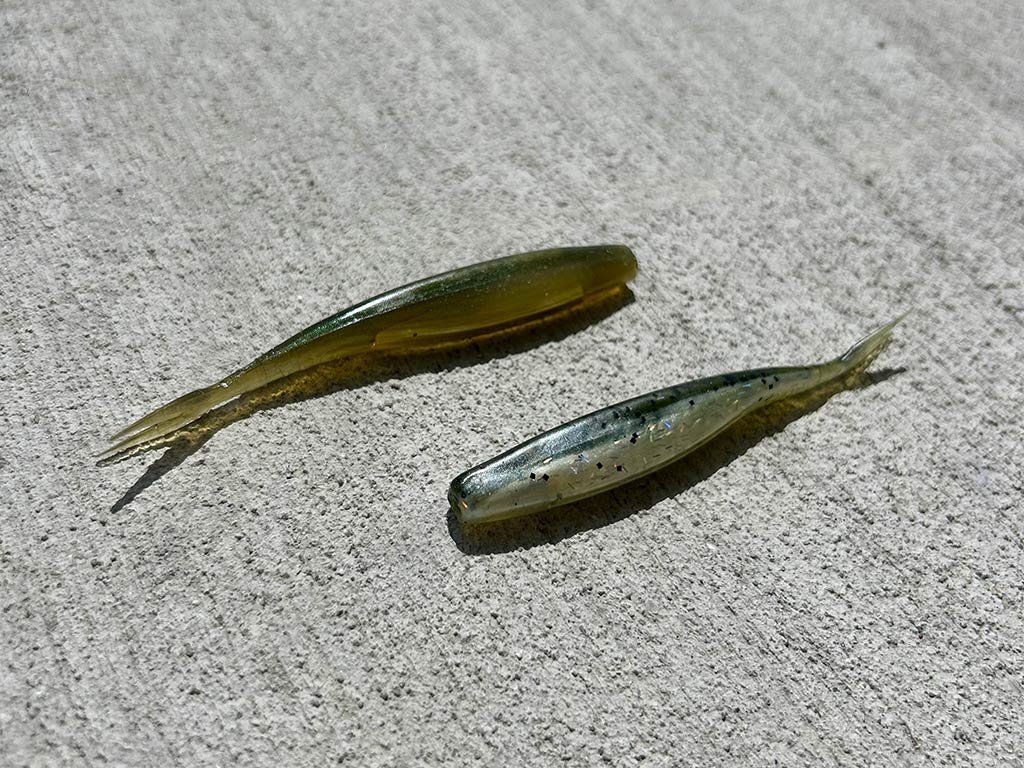
Photo courtesy of Caitlyn GatrellContinuing our exploration of saltwater lures, we move on to flukes. Among the well-established fishing brands, D.O.A’s “zoom” and Gulp!’s saltwater grub tear up the waters, pulling fish out left and right. The versatility of flukes makes them a favorite as they can be rigged with jig heads to sit on the bottom, trolled through the middle, or employed on the surface. Their flexibility is a key factor that keeps fishermen using them.
Flats and areas with grassy bottoms provide an ideal area for using flukes, thanks to their weedless nature. This allows anglers to maneuver through areas where fish may be hiding without the risk of getting stuck. By adding weights, flukes can also be effective in deeper waters with currents. Tarpon, Snook, Seatrout, Ladyfish, and Jack Crevalle are all fans of flukes as these lures commonly resemble glass minnows, making them an excellent choice of bait.
Vertical Jigs
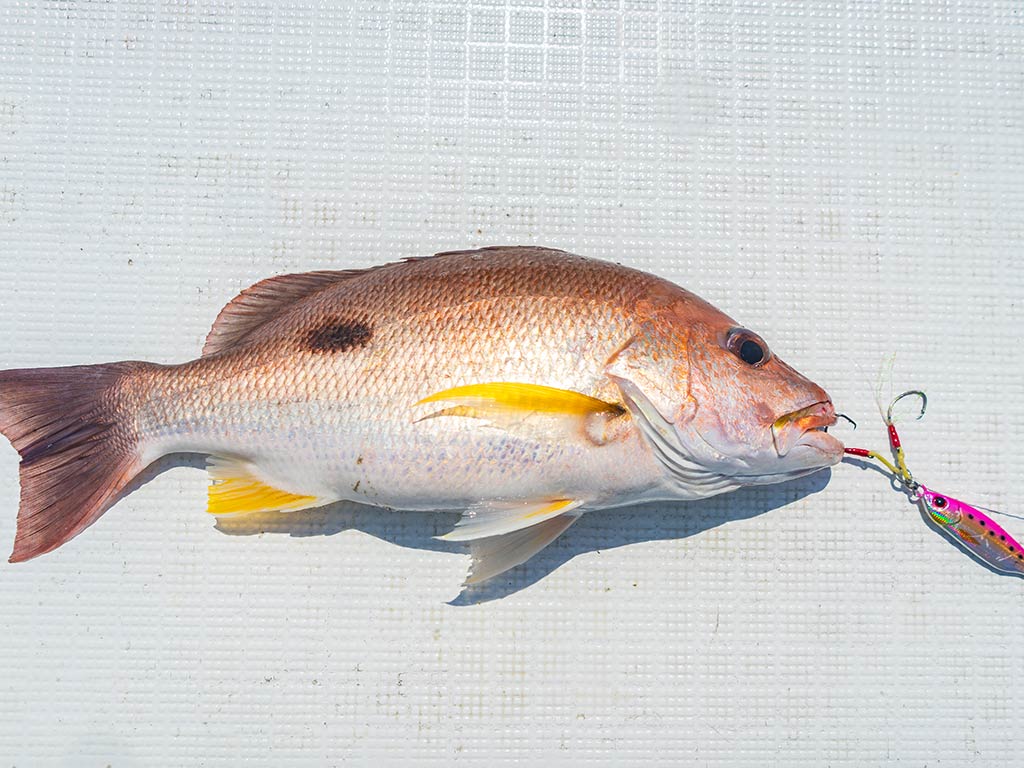
Much like bucktails, vertical jigs are among the leaders in the offshore artificial industry. Companies like Shimano and Williamson craft an extensive array of vertical jigs, composed of long weighted pieces and dangling treble hooks, designed to imitate tasty bait. Their popularity stems from the unique advantage they offer - the ability to present the lure at a vertical angle rather than along the surface. This approach helps anglers explore greater depths and reach more predators.
With a diverse range of colors and sizes, vertical jigs prove irresistible to saltwater species such as Snapper, Grouper, Tuna, Wahoo, and more. They’re effective near reefs, wrecks, structures, and open waters with schooling fish. Once a strike occurs, be prepared, as these jigs often provoke bites from larger creatures of the deep.
Trolling Lures
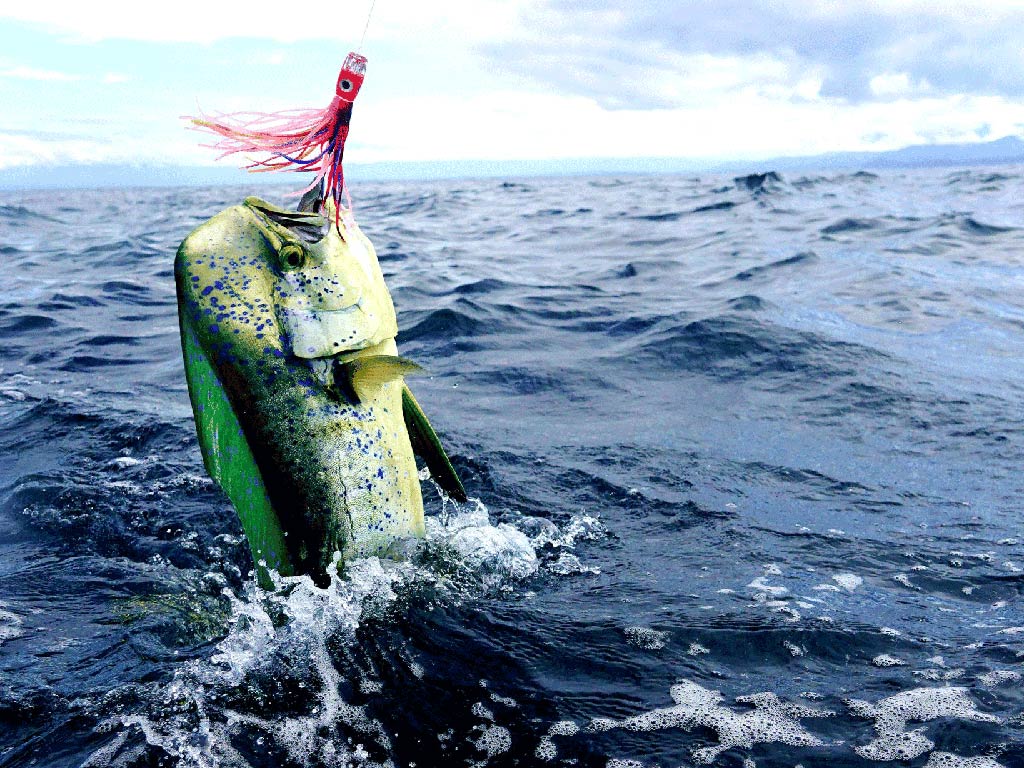
Moving down the list, we dive into the realm of trolling lures. These lures are most commonly used in offshore fishing, as their primary purpose is to cover a lot of ground. Whether executing a slow troll over flats or a quick one offshore, trolling lures offer versatility to adapt to different areas. The size range for these lures varies significantly to cater to the diverse range of marine species you’ll be targeting.
From deep-diving plugs to long-skirted baits, there are tons of options out there, all unique with vibrant colors, flashiness, and sometimes even noise. They tend to imitate real critters that predators like Tuna, Mackerel, Wahoo, and some inshore species often consume. These saltwater lures often bring in trophy catches! As for brands, Magbay, Rapala, and Yo-Zuri are leaders in the trolling lures industry.
Spinnerbaits
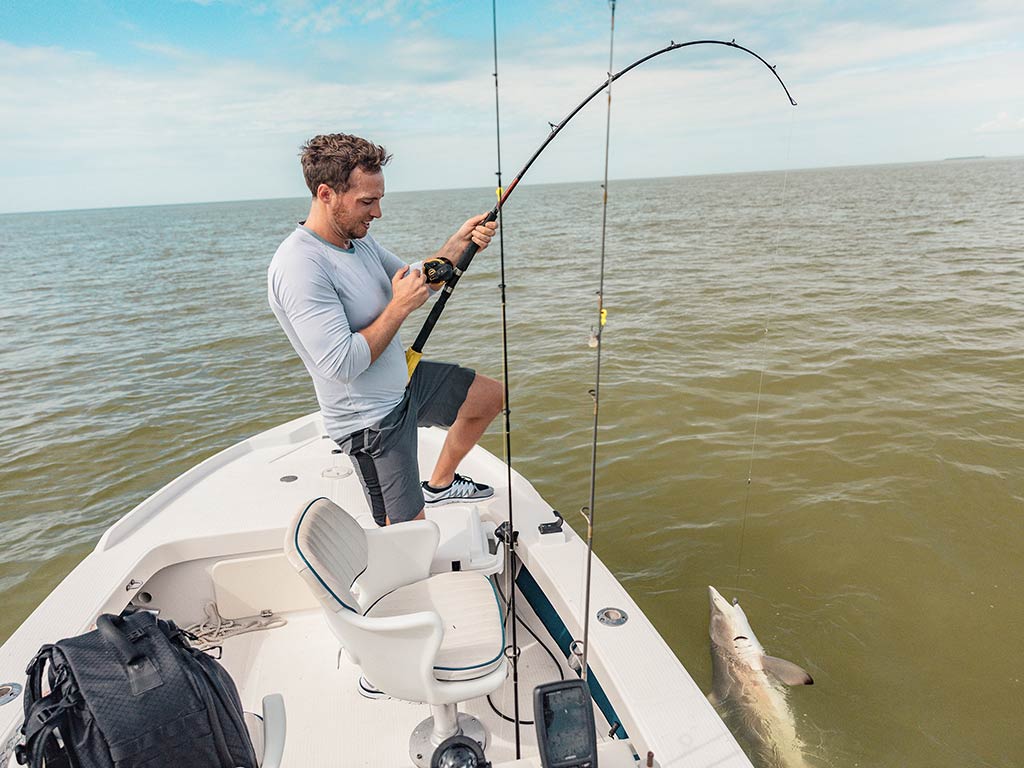
Last but by no means least, spinnerbaits stand out as another popular choice among saltwater fishing lures. Their name provides a clue to their specialty, as they spin and shine through the water. Whether you spin your bait towards or underneath the surface, they’re sure to put on a show for nearby fish.
If you’re looking for a popular saltwater spinnerbait to try, check out Strike King’s “redfish magic.” Common saltwater species that you can expect to attract with spinnerbaits include Redfish, Seatrout, and even Snook. You can best target these game fish with spinnerbaits in shallow, covered areas such as grassy flats or salt marshes, where the bait can really stand out.
Saltwater Lures: Your Key to Navigating Different Depths
We’ve explored quite a few options in this article, so it should be evident that there’s a large variety of saltwater fishing lures out there. Whether you enjoy fishing from land or you prefer to be miles offshore in deep waters, there are plenty of artificial lures to choose from. In fact, we only really scratched the surface with the list above!

Photo courtesy of Southern Saltwater AdventureIt’s important to remember that each lure has its own advantages. Each is tailored for different depths, species, and corresponding techniques. While every angler is entitled to their own opinion, I think that soft plastics, topwater lures, and jigs stand out as the most effective lures in saltwater fishing. It’s time for you to go out and see if you agree with me.
Do you have a favorite saltwater lure? Maybe there’s something we missed off the list. Get in touch in the comments section below!
The post Best Saltwater Lures: A Beginner’s Guide for 2024 appeared first on FishingBooker Blog.
https://fishingbooker.com/blog/saltwater-lures/
 CampingSurvivalistHuntingFishingExploringHikingPrivacy PolicyTerms And Conditions
CampingSurvivalistHuntingFishingExploringHikingPrivacy PolicyTerms And Conditions
